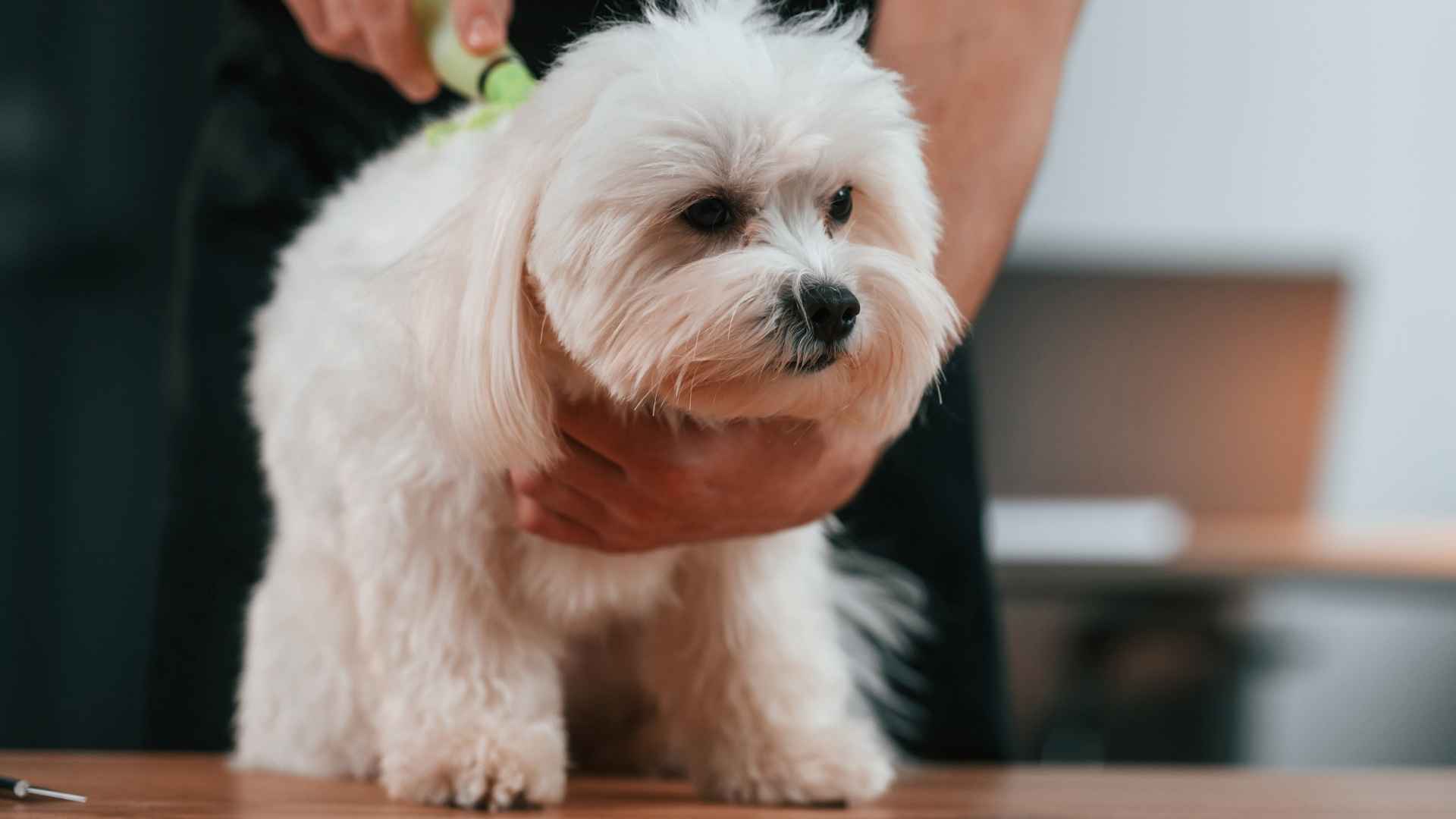If you’re thinking about bringing home a furry friend, there’s more to consider than just wagging tails and puppy eyes—especially when it comes to grooming. Some dogs look effortlessly fabulous, but behind that flawless coat is a whole lot of brushing, trimming, and pampering.
Yes, we’re talking about the high-maintenance divas and dandies of the dog world—those lovable pups that need frequent grooming to stay healthy and happy. While their luxurious coats and polished appearance can steal your heart, the commitment to their grooming needs can be a dealbreaker for the unprepared.
Whether you’re already a dog parent or planning to become one, understanding the grooming demands of certain breeds is essential. In this blog, we’ll explore frequent grooming required breeds and what it truly means to keep them looking their best. Ready to roll up your sleeves and grab a brush? Let’s dive in!
Frequent Grooming Required Dog Breeds
1. Chow Chow
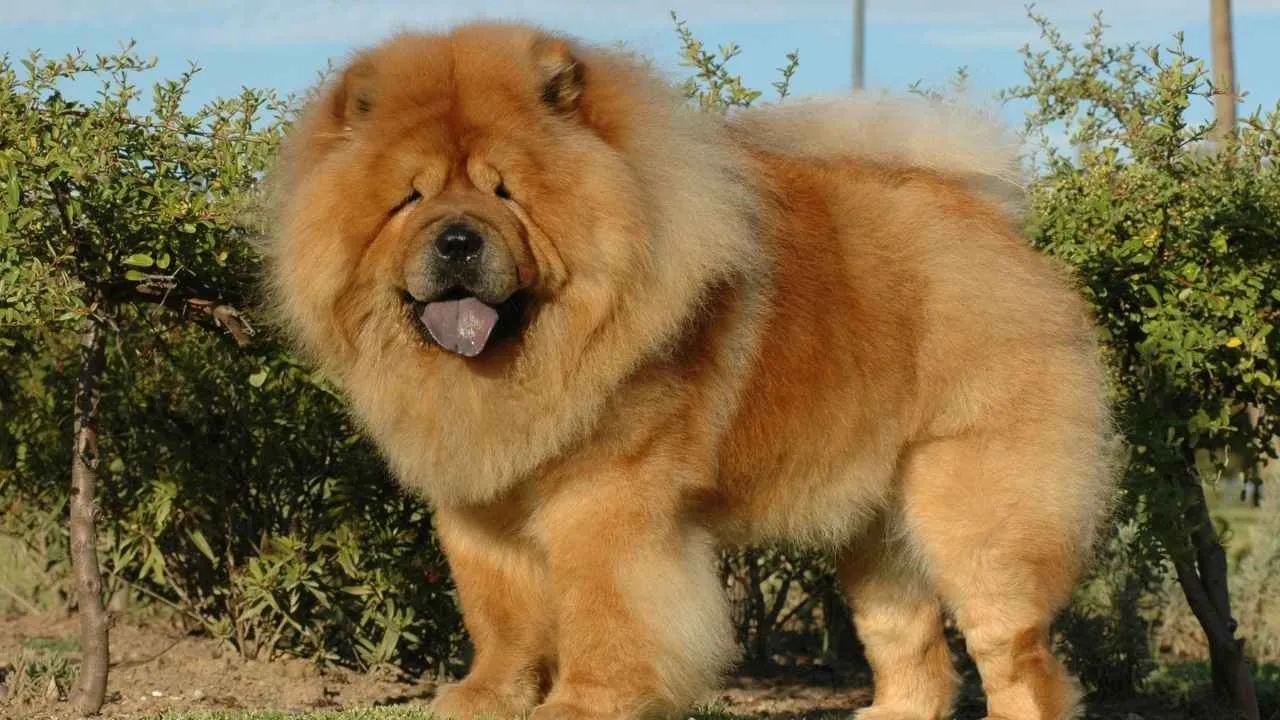
The Chow Chow is a breed that immediately captures attention with its lion-like mane and thick, plush double coat. Originally from China and known for its aloof personality and dignified presence, this dog is a grooming commitment from day one. Whether you’re admiring a rough-coated Chow or the smoother variety, both coat types demand consistent maintenance to prevent matting and skin issues.
Chow Chow’s dense undercoat requires consistent care and grooming to keep it pristine. This thick layer can trap dirt, moisture, and shed hair, making it a breeding ground for tangles and mats if left unattended.
Weekly brushing is a must, but during seasonal shedding (which is intense), daily grooming becomes essential. Specialized tools like slicker brushes and undercoat rakes are often necessary to reach deep into their fur.
Grooming a Chow Chow isn’t just about brushing—it’s about keeping their entire skin and coat healthy. Regular baths every 4 to 6 weeks are recommended, but drying their heavy coat thoroughly afterward is crucial to avoid fungal infections. Many Chow owners turn to professional groomers not just for their expertise but because grooming sessions can be time-consuming, especially for inexperienced pet parents.
As noted by PetMD, Chow Chows are prone to tear staining and ear infections due to their deep-set eyes and folded ears. This means routine face cleaning and ear checks should be part of the grooming ritual. Nail trimming and paw care are equally important, particularly because their thick coat can hide overgrown nails and matted fur between the toes.
2. Afghan Hound
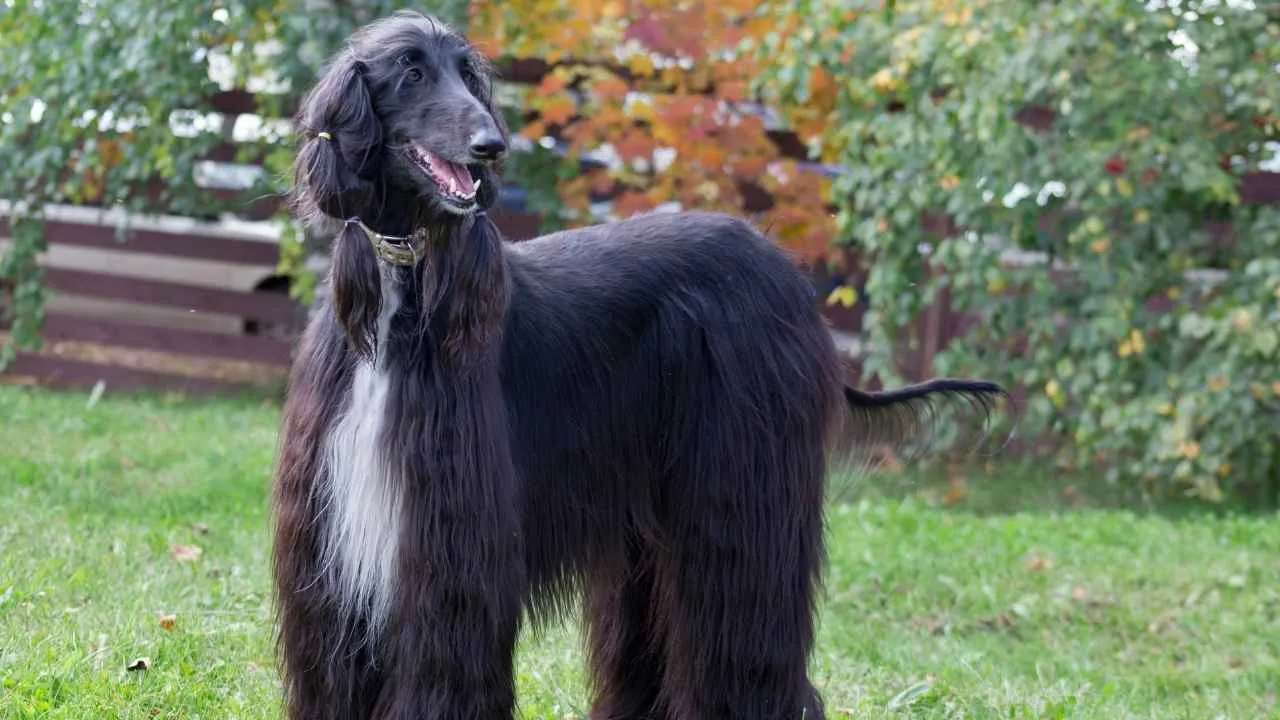
The Afghan Hound is the epitome of elegance, known for its flowing, silky coat and aristocratic demeanor. Originally bred for hunting in the mountains of Afghanistan, this breed’s beauty comes with a price—an intensive grooming session that demands dedication.
The long, fine-textured hair is stunning but extremely prone to tangling and matting without regular care, making the Afghan Hound a top contender in the world of high-maintenance dogs.
Afghan Hounds require brushing at least three to four times a week, if not daily. Their hair acts almost like human hair, catching debris, dirt, and even moisture. Without routine brushing, the coat can quickly become knotted, which not only looks unkempt but can also lead to painful skin issues.
Bathing is another crucial element in an Afghan Hound’s grooming schedule. These dogs often need a full bath every two to three weeks using high-quality, moisturizing dog shampoos and conditioners to keep their long coat silky and manageable.
Afghans also need regular trimming around their feet and sanitary areas to maintain hygiene and prevent tangles. Since they have long ears covered in silky hair, ear cleaning and monitoring is vital to avoid infections. Combine all that with nail trimming and dental care, and you’ve got a grooming checklist that rivals some humans’ self-care routines.
Despite the work, many Afghan Hound owners find the grooming process rewarding. It’s a bonding experience, and the result is a truly breathtaking dog with a show-stopping coat.
3. Komondor
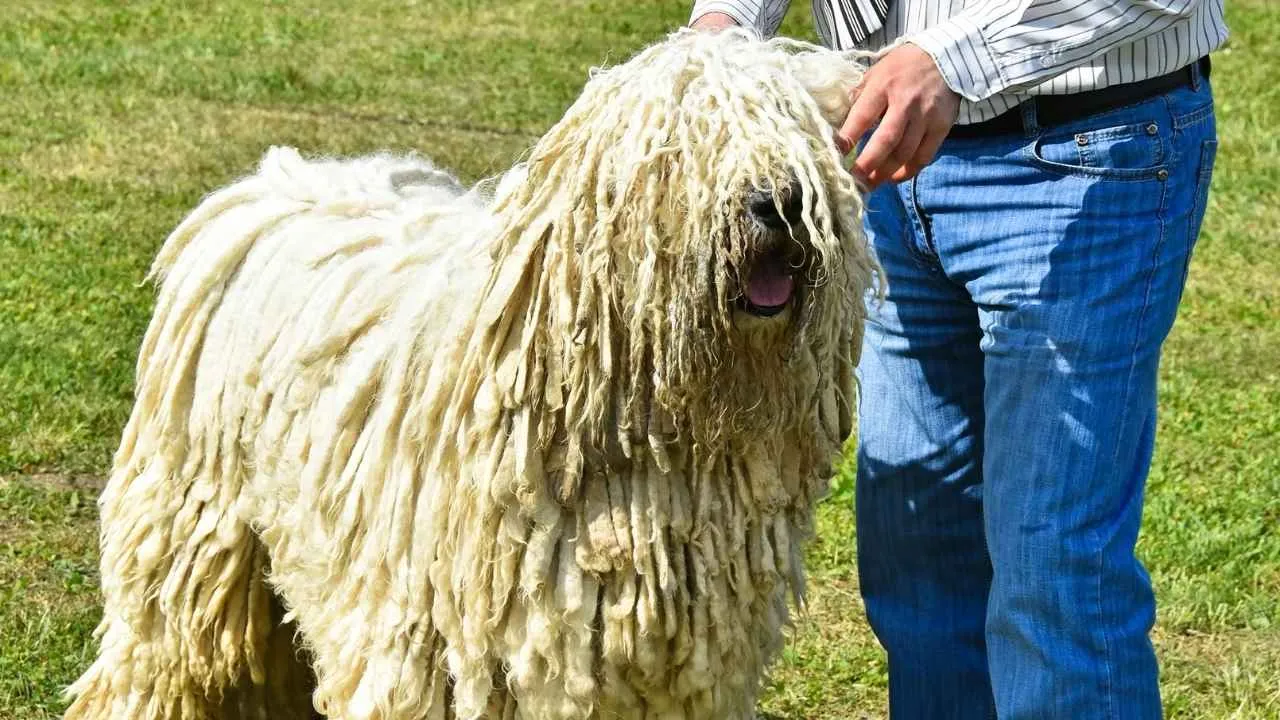
The Komondor is instantly recognizable for its distinctive corded coat, which resembles thick dreadlocks. While this unique look sets it apart from other long-haired breeds, it also places the Komondor firmly among dogs that require frequent grooming. Contrary to what some might believe, this breed’s coat isn’t low maintenance—it demands patience, precision, and a strong commitment to coat care.
As noted by PetMD, Komondor’s coat develops cords naturally as it matures. These cords need to be carefully separated by hand to avoid matting close to the skin, especially in the early stages of cord formation. Skipping regular grooming sessions can lead to painful tangles and serious skin issues, making early intervention a key part of Komondor grooming techniques.
Though this breed doesn’t need daily brushing like some long-haired dogs, consistent care is still essential. Dirt, debris, and moisture can easily become trapped in the cords, compromising the dog’s coat and overall coat health.
Occasional baths are necessary but must be followed by thorough drying, which can take hours. Damp cords left unattended may lead to odor and skin infections, so professional guidance or pet grooming experience is highly recommended.
Many Komondor owners rely on professional dog grooming services, especially during the first couple of years when the cords are forming and still fragile. Groomers experienced with double-coated dogs and non-traditional coat types can help maintain the Komondor’s coat in a way that keeps it both healthy and visually striking.
Owning a Komondor means committing to a grooming lifestyle unlike any other. Their cords are not just for show—they’re part of a complex coat that demands regular attention and knowledge.
4. Lhasa Apso
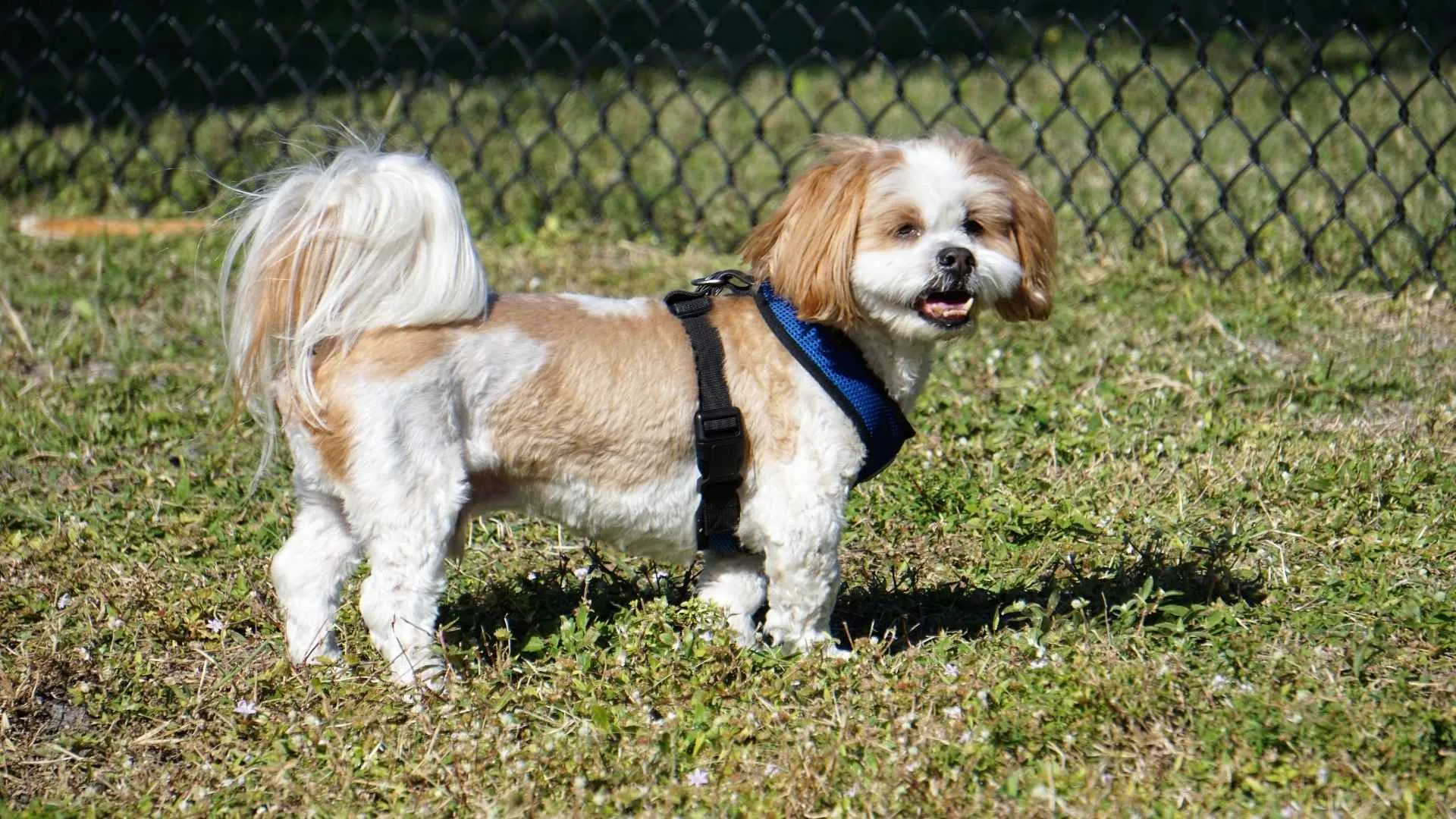
Don’t let the small size of the Lhasa Apso fool you—this breed comes with big grooming requirements. Known for its long, luxurious, flowing coat that can sweep the floor, the Lhasa Apso may be adorable and regal, but it demands a dedicated grooming routine.
Without proper maintenance, its flowing hair can quickly become tangled and matted, making this breed one of the more high-maintenance companions in the dog world.
As stated by Hillspet, Lhasa Apsos need brushing to prevent knots, mats, and dirt buildup. Daily brushing is ideal, especially for those kept in a full coat. Their long strands are prone to tangling near the ears, legs, and underbelly—areas that are often overlooked but require extra attention. Even missing a day or two can lead to tough mats that are uncomfortable and time-consuming to remove.
In addition to brushing, regular bathing every couple of weeks helps keep the coat soft and manageable. Using the right shampoos and conditioners ensures the hair stays free from breakage and dryness. Drying is also crucial, as damp fur can encourage matting and skin irritation. All of this care adds up, turning Lhasa grooming into a full-time commitment rather than a casual task.
Many owners choose to keep their Lhasa Apso in a shorter “puppy cut” to make grooming more manageable. However, even with a trimmed coat, this breed still needs routine care to maintain coat and skin health. Regardless of length, their grooming requirements remain among the most intensive for small dogs.
For dog lovers who enjoy the process of grooming or are willing to invest in professional grooming services, the Lhasa Apso is a charming, loyal breed with beauty worth maintaining.
5. Poodle
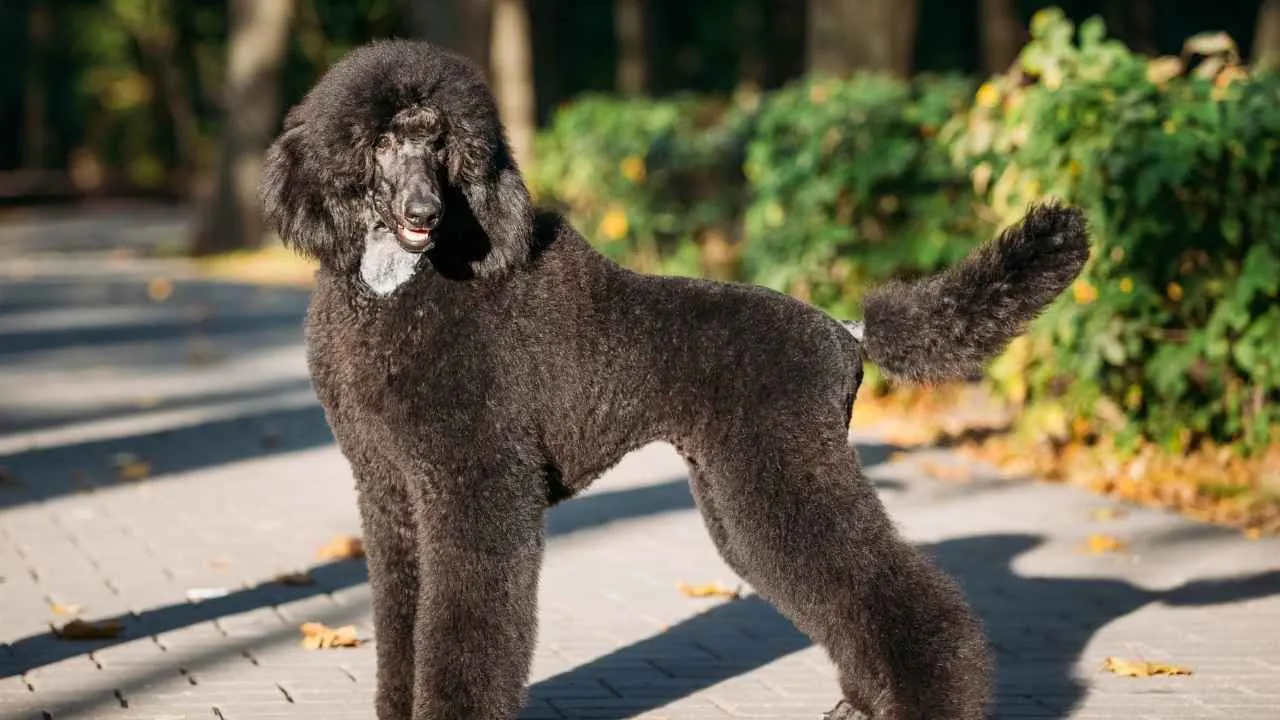
The Poodle is not just one of the most intelligent dog breeds—it’s also one of the most stylish. Known for its curly coat and iconic appearance, this breed turns heads with its distinctive coat styles, whether it’s the classic continental clip or a neatly trimmed puppy cut. But behind the glamor lies a grooming routine that’s anything but simple, making the Poodle a standout on any list of high-maintenance dogs.
One of the defining characteristics of a Poodle’s coat is that it grows continuously and doesn’t shed like other breeds. This means regular haircuts are a must to prevent matting and maintain shape.
Depending on coat length and style, trims are usually needed every 4 to 6 weeks. Without timely grooming, the curly hair can become tightly tangled, which is not only unsightly but uncomfortable for the dog.
Daily brushing or at least a few sessions per week are essential to keep the coat free from knots and to distribute natural oils. The Poodle’s curly coat is more prone to matting near the armpits, behind the ears, and around the tail. These spots require meticulous care, as mats can form quickly and be difficult to remove without professional help.
Bathing is another important aspect of a Poodle’s grooming regimen. Because their hair absorbs dirt easily, regular baths—paired with proper drying and combing—help maintain their elegant look and healthy coat. A good detangling conditioner and high-velocity dryer are often part of the grooming routine, whether done at home or by a professional.
6. Puli
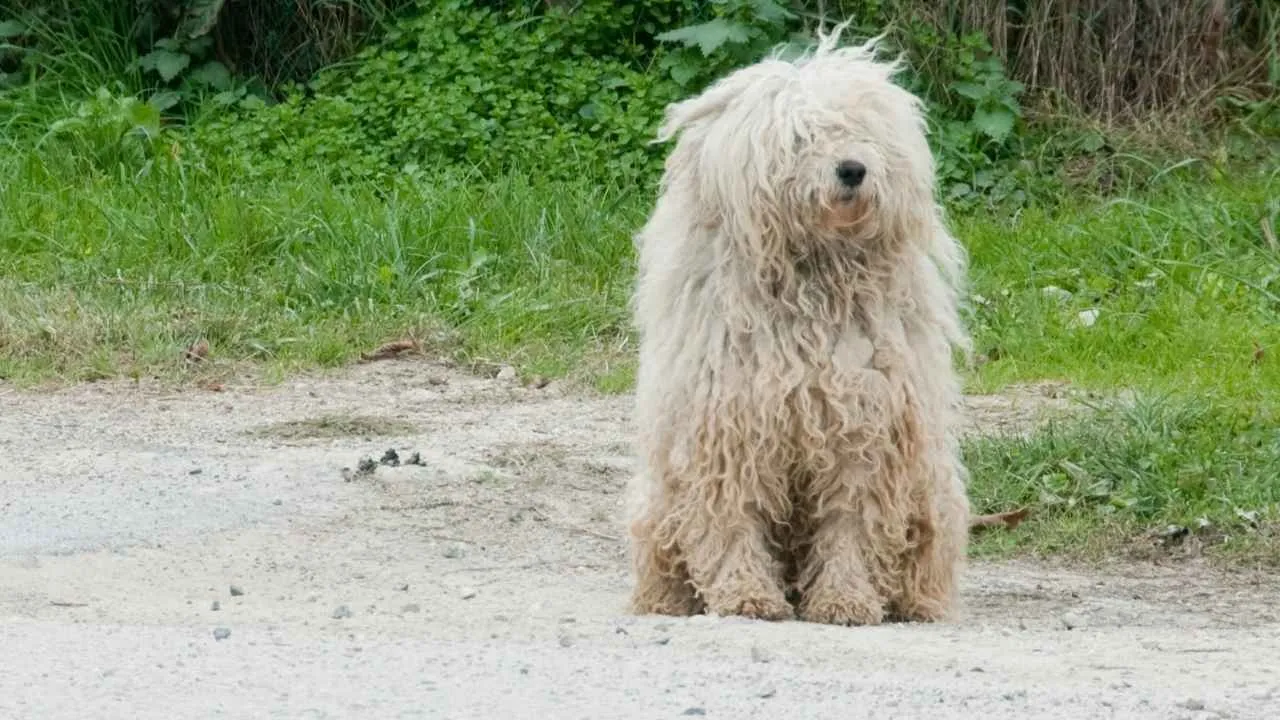
The Puli is a unique and spirited breed best known for its naturally corded coat that resembles thick, woolly dreadlocks. While its appearance is undeniably striking, that signature look comes with significantly more grooming than many expect.
This isn’t a wash-and-go kind of dog—maintaining a Puli’s coat takes patience, technique, and consistent care from puppyhood onward. Pet owners must commit to extensive grooming, which includes daily brushing to remove dead hair and prevent mats from forming.
For new Puli owners, this is when personalized advice from an experienced groomer or breeder becomes incredibly valuable.
As noted by Purina, Puli’s coat forms cords that require a completely different grooming approach. As the cords develop, they must be manually separated to prevent matting at the roots. This process can be time-consuming and delicate, especially during the early stages of cord formation, when tangles are most likely to occur.
Pulik (plural for Puli) needs grooming to prevent matting, preserve their coat’s appearance, and maintain skin health and cleanliness. Their dense cords can easily trap dirt, debris, and moisture, leading to odor or skin irritation if left unchecked. Regular maintenance involves checking the cords for trapped elements, gently separating them, and ensuring the skin beneath remains healthy and dry.
Bathing a Puli is another task that requires commitment. Though they don’t need frequent baths, when they do get washed, drying their coat thoroughly is crucial—and can take several hours. Damp cords can lead to mildew or fungus, which is why careful drying and monitoring are as important as any other part of the grooming routine.
7. Bichon Frise

The Bichon Frise is an adorable small breed with a cloud-like coat that’s as soft as it is eye-catching. Their cheerful personality and stylish appearance make them a favorite among companion dogs, but behind that adorable puff lies a grooming schedule that isn’t for the faint of heart.
The Bichon’s white, powder-puff coat doesn’t grow long like some long hair breeds, but it requires constant shaping, brushing, and cleaning to maintain its signature look.
One of the biggest grooming benefits of the Bichon Frise is that it tends to minimize shedding, which can be a plus for people with allergies. However, this trait comes with a trade-off—the coat keeps growing and needs consistent care to stay neat and tangle-free. Without regular brushing, the soft curls can easily mat, especially around the face, legs, and chest, where friction is common.
Frequent grooming is essential not just for appearance, but for the health of their skin and coat. Bichons typically need professional grooming every 4 weeks, including trimming and bathing. Their hair also requires brushing several times a week to prevent mats and maintain coat texture. Neglecting even a few sessions can quickly lead to dense tangles that are difficult to remove.
The Bichon Frise definitely ranks among the high-maintenance breeds when it comes to grooming. Maintaining their clean, fluffy look requires both time and tools—special brushes, quality shampoos, and the occasional help of a professional groomer. Eye staining is another area of concern, often requiring daily cleaning to keep their signature white coat pristine.
While they may not have the ruggedness of lower-maintenance dogs, the Bichon Frise makes up for it with personality and charm.
8. Samoyed

The Samoyed is a stunning breed known for its “Sammy smile” and thick, white coat that’s as beautiful as it is high-maintenance. Beneath their fluffy, snow-white exterior lies a soft undercoat that plays a crucial role in their grooming needs. While their playful personality and affectionate nature make them a favorite, their coat requires regular care to keep them looking their best and to avoid common grooming issues.
Because of their dense double coat, Samoyeds need to be groomed regularly to prevent mats and tangles. This breed sheds heavily, especially during seasonal changes, and requires occasional brushing to remove loose hair and keep its coat manageable.
During shedding seasons, which occur twice a year, daily brushing becomes essential to prevent hair from accumulating all over your home and to keep their skin healthy.
As noted by AKC, Samoyeds’ thick coat can trap dirt, moisture, and debris, which can lead to skin irritation and other issues if not properly maintained. Their soft undercoat is particularly susceptible to matting, so regular grooming is key to keeping the coat fluffy and light.
Using the right grooming tools—such as a de-shedding rake and slicker brush—will help you keep your Samoyed’s coat in top shape, reducing the likelihood of mats and tangles.
Their thick, luxurious fur demands time, effort, and attention, especially in warm weather when shedding intensifies. Frequent baths are also required to keep the coat clean and shiny, though it’s important to avoid over-bathing, which can strip natural oils from their skin.
9. Shih Tzu
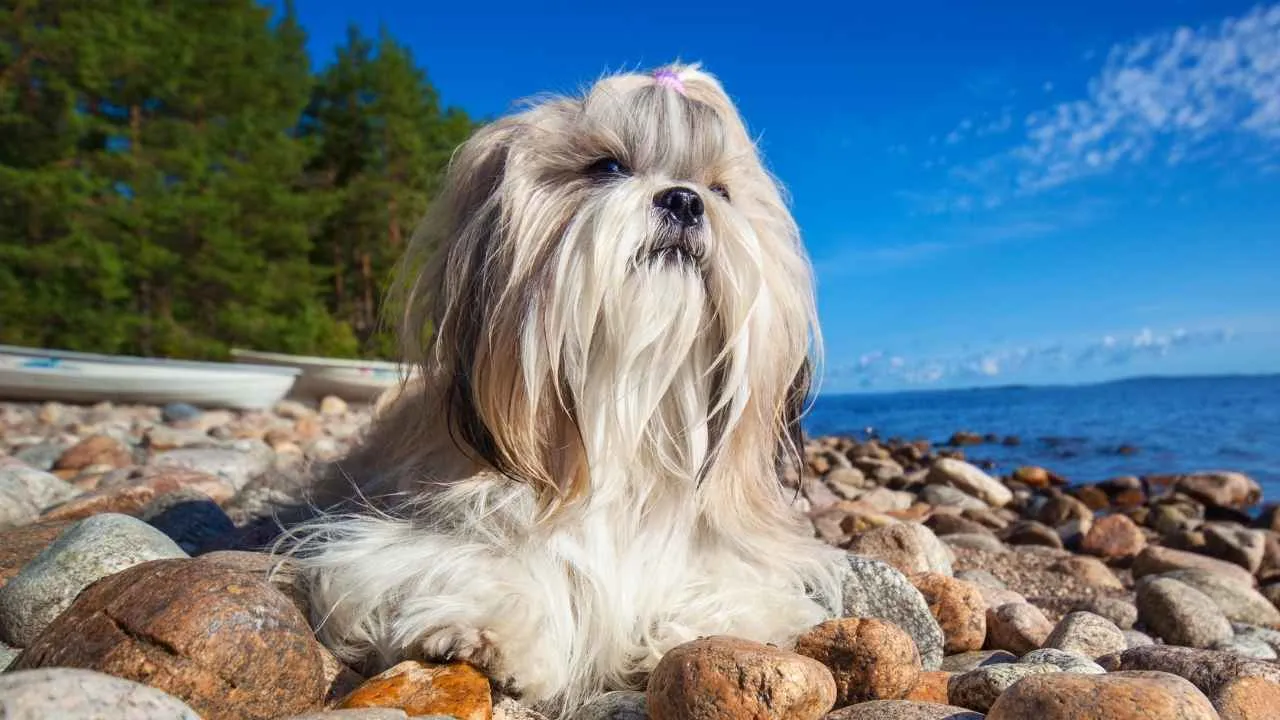
The Shih Tzu is a beloved breed known for its adorable face and long, flowing coat. However, behind that fine hair and regal appearance lies a grooming routine that requires dedication and consistent grooming. Though small in size, the Shih Tzu’s coat is a high-maintenance feature that demands regular attention to ensure it remains healthy, shiny, and free from tangles.
One of the main challenges of owning a Shih Tzu is the frequent grooming appointments needed to maintain its beautiful, long coat. Without professional grooming sessions every few months, the coat can become tangled and matted, causing discomfort for the dog and potentially leading to skin irritations.
Regular brushing not only prevents matted hair, but it also promotes the dog’s skin health by stimulating the natural oils that keep their coat smooth. Neglecting to brush regularly can lead to painful mats that can affect the overall well-being of the dog, causing irritation or skin problems.
An important aspect of Shih Tzu care is keeping up with the regular maintenance of their coat. Their fine hair grows continuously, so trimming around the eyes, ears, and paws is necessary to avoid irritation.
Professional grooming sessions are often recommended to ensure the coat remains manageable, especially when it comes to achieving the signature Shih Tzu look. A proper cut not only helps with appearance but also prevents the buildup of oils and dirt, which could lead to discomfort.
For Shih Tzu owners, regular grooming is a commitment that goes beyond the standard brushing routine. Keeping your Shih Tzu’s coat looking beautiful and healthy is essential to its overall well-being.
Conclusion
In wrapping up, it’s clear that some dogs demand more time and attention when it comes to grooming. Double-coated breeds like the Portuguese Water Dogs require regular brushing to prevent matting and keep their coats healthy. The elegant Cocker Spaniel and silky Yorkshire Terrier also top the list for high-maintenance fur, needing frequent trims and care to maintain their signature looks.
Even the unique coat of the Kerry Blue Terrier calls for consistent grooming to keep it in top shape. While breeds like the French Bulldog have minimal grooming needs, understanding your dog’s grooming requirements is essential to keeping them healthy and happy. Regular grooming isn’t just about appearance — it’s a key part of responsible pet care.


